Peter Lobner, Updated 22 December 2020
On 16 December 2020, the Return Vehicle from China’s unmanned Chang’e 5 lunar spacecraft returned to Earth with the first new lunar samples since the Soviet Union’s (now Russia) Luna 24 mission returned about 6 ounces (170 grams) of lunar material on 22 August 1976. The last US lunar samples were obtained during the manned Apollo 17 mission, which returned to Earth on 14 December 1972.
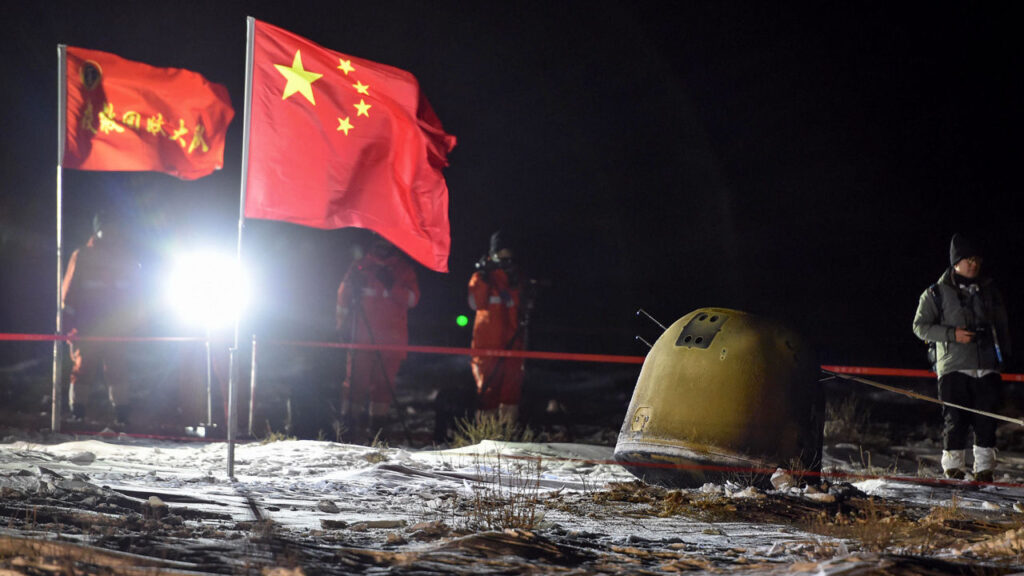
The Chang’e 5 Spacecraft
The basic architecture of the robotic Chang’e 5 spacecraft resembles the US Apollo manned lunar mission spacecraft in having four basic parts: a Service Module, a Return Vehicle (analog to the Apollo Command Module), and a two-stage lunar lander with a Lander stage and an Ascent stage.
The lander has two tools for acquiring samples: a drill for coring samples and a mechanical claw for grabbing surface samples.
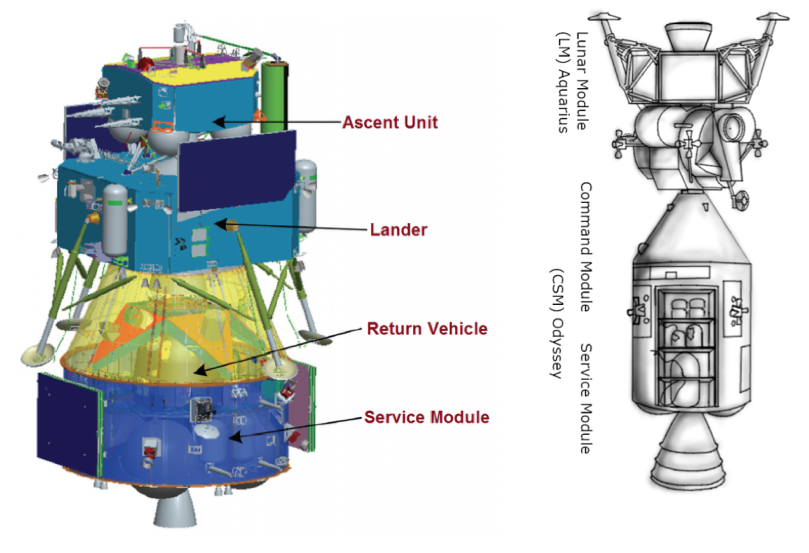
You’ll find more details on the Chang’e 5 spacecraft on the Spaceflight101 website here: https://spaceflight101.com/change/change-5/
The mission profile
The basic elements of the Chang’e 5 mission are shown in the following graphic.
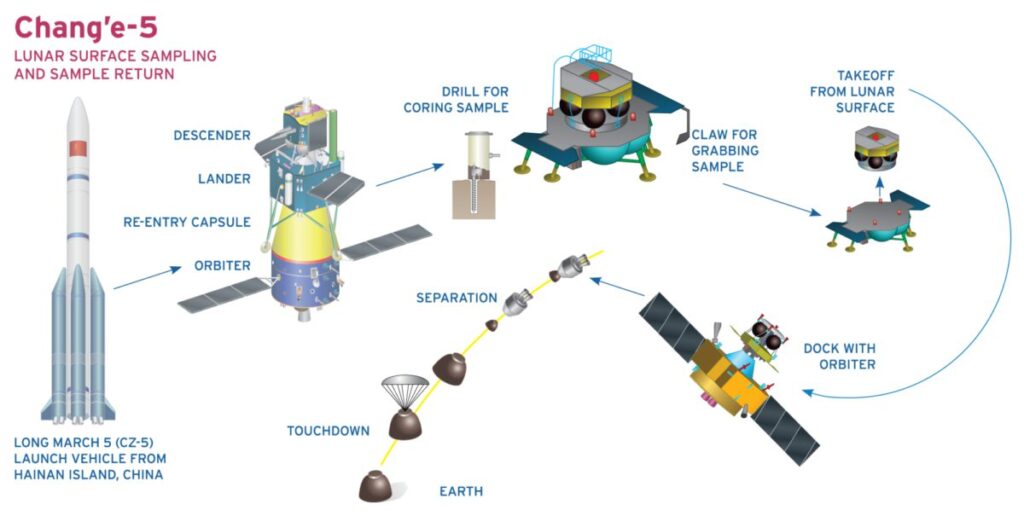
The robotic Chang’e 5 spacecraft is named after the Chinese Moon goddess. The lunar mission began on 24 November 2020 when a Long March-5 rocket lifted off from China’s Wenchang launch site and placed the Chang’e 5 spacecraft, still mated to an upper stage rocket, into a temporary low Earth orbit. The upper stage rocket accomplished the “trans-lunar injection” and then separated from the spacecraft, which continued on toward the Moon. A rocket motor on the Service Module slowed the spacecraft for lunar orbit insertion followed by orbital adjustments in preparation for landing. From lunar orbit, the combined Lander / Ascent Unit descended and landed in the Sea of Storms region on 1 December 2020. The Service Module / Return Vehicle remained in lunar orbit.
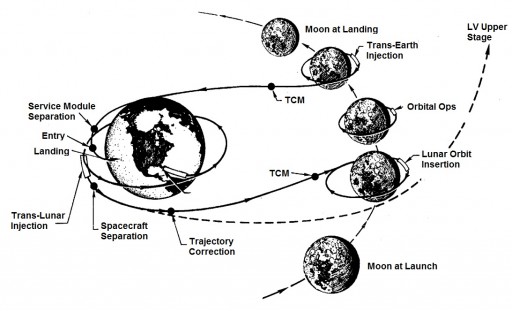
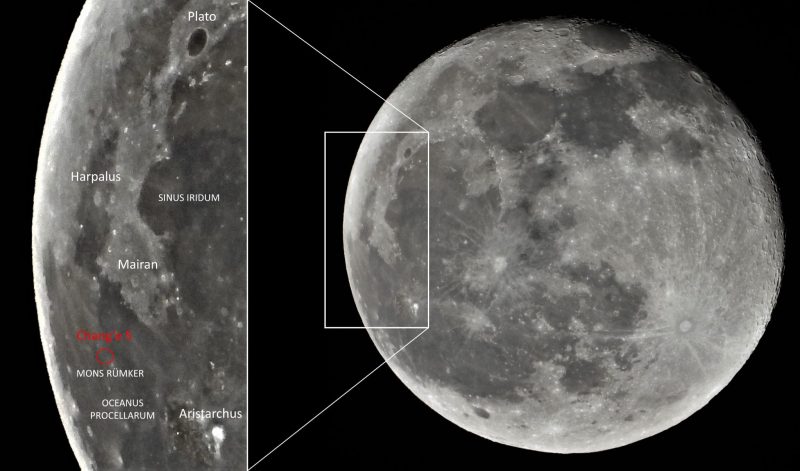
The Lander / Ascent Unit was designed to collect about 2 kg (4.4 lb) of lunar samples. After the samples were collected, the Ascent Unit launched from the lunar surface on 3 December 2020 and rendezvoused and docked with the orbiting Service Module / Return Vehicle. After the lunar samples were transferred to the Return Vehicle, the Ascent Unit was released. The rocket motor on the Service Module accomplished the trans-Earth injection and the spacecraft departed lunar orbit for the journey back to Earth. As the spacecraft approached Earth, the Service Module separated and the Return Vehicle, which reentered the Earth’s atmosphere to complete the mission with a safe landing on 17 December 2020. The Ascent Unit was de-orbited and crashed into the lunar surface on 7 December 2020.
This lunar mission profile is quite similar to that used by the US on the manned Apollo missions in the late 1960s and early 1970s.
Meanwhile, the Chang’e 5 Service Module flew past Earth and continued toward the Sun-Earth Lagrange point known as L1, which is a gravitationally stable point in space between the Earth and the Sun, about 900,000 miles (1,500,000 km) from Earth. The spacecraft still has more than 440 pounds (200 kg) of propellant remaining and can make scientific measurements at L1 (and beyond?).
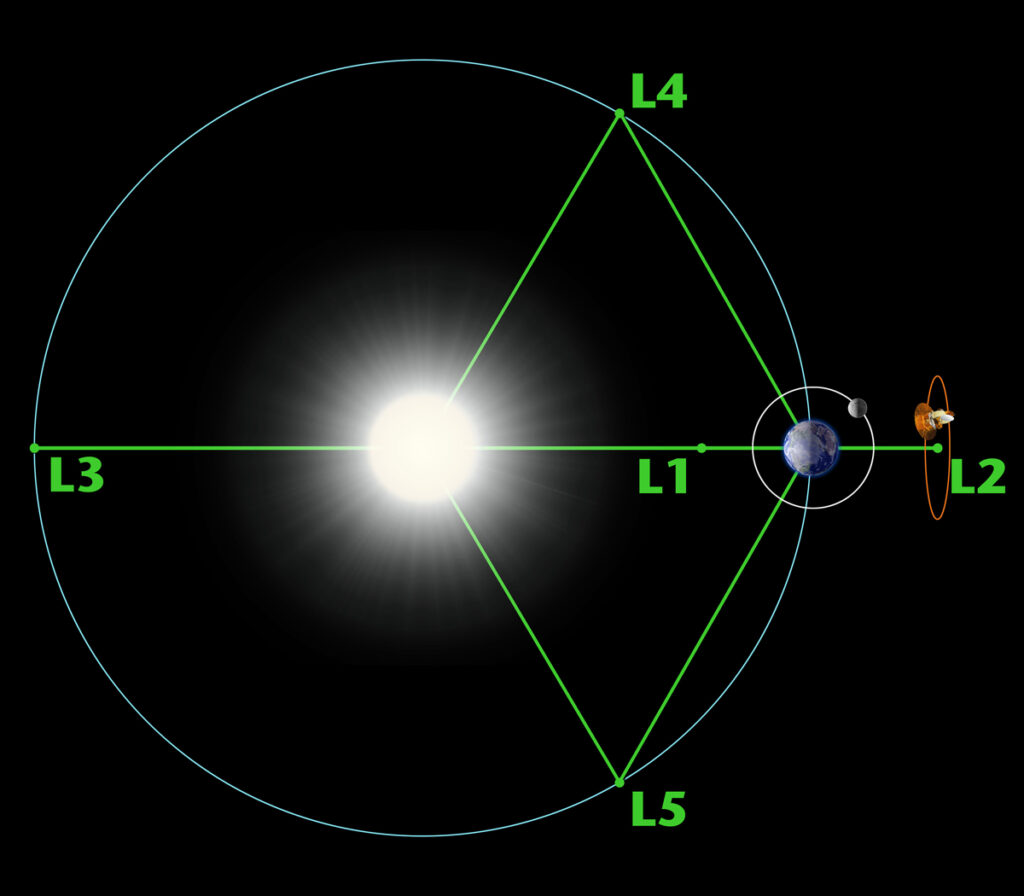
Source: space.com
For more information:
- Paul Voosen, “China lands its Moon rocks in Inner Mongolia,” Science, 16 December 2016: https://www.sciencemag.org/news/2020/12/china-lands-its-moon-rocks-inner-mongolia
- “Chang’e-5: China’s Moon Sample Return Mission,” The Planetary Society: https://www.planetary.org/space-missions/change-5
- Lia Rovira, “China’s Chang’e 5 moon craft begins extended mission,” EarthSky.com, 22 December 2020: https://earthsky.org/space/china-moon-mission-change-5-sample-return